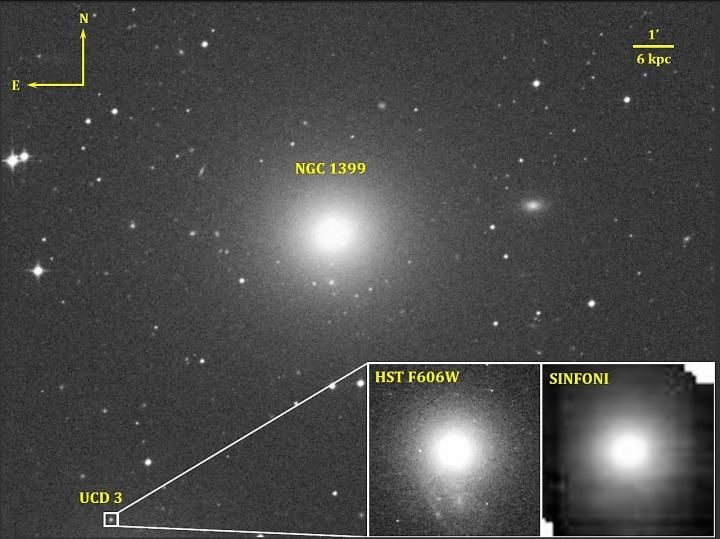Supermassive Black Hole Spotted In Tiny, Densely Packed Galaxy

Black holes come in a variety of sizes, but the biggest ones — popularly known as supermassive black holes — are mostly found at the center of massive galaxies like our own Milky Way. These voids weigh on the order of hundreds of thousands to billions of solar masses and have drawn a lot of attention from scientists across the globe.
One such work, conducted by a team of astronomers in Russia, revealed something very rare — a supermassive black hole sitting at the center of a tiny galaxy named Fornax UCD3.
Fornax UCD3 sits 62 million light-years from Earth as part of the Fornax galaxy cluster. It belongs to a recently discovered unusual class of galaxies called ultracompact dwarfs (UCDs) due to some very strange features.
UCDs typically weigh up to 100 million suns but when it comes to size, they span just around 600 light-years across. As a result, the objects make some of the most densely packed stellar systems in the universe — where the distance between stars is very less.
This is why the team was particularly surprised when they found a humongous black hole in the environments of Fornax UCD3. In fact, it is only the fourth such occasion when a monstrous black hole has been found at the center of such a small galaxy.
"We have discovered a supermassive black hole in the center of Fornax UCD3,” Anton Afanasiev, the first author of the study, said in a statement. “The black hole mass is 3.5 million [times] that of the Sun, similar to the central black hole (Sagittarius A*) in our own Milky Way."
Despite hosting similar sized black holes, there is a massive difference in the size of both galaxies. For instance, Milky Way is a lot bigger and more massive than the dwarf, spanning around 100,000 light-years across and weighing as much as several hundred billion suns.
Normally, supermassive black holes make up 0.3 percent of a galaxy’s total mass, but in this case, the black hole makes up a whopping 4 percent of Fornax UCD33.
The black hole was found when the researchers, hailing from Lomonosov Moscow State University, Russia, took observations from SIFONI instrument installed on the European Southern Observatory’s Very Large Telescope. The spectral data collected in the work could only be justified if it had a humongous black hole at the center.
The discovery, as the team described, lends further support to the famous tidal origin theory for galaxies. According to the hypothesis, an average-sized galaxy took the form of a dense but small UCD after interacting with a much bigger and more massive galaxy sometime in the distant past. The tidal forces generated from this interaction would have stripped most of the stars in the smaller galaxy, leaving its nucleus behind as UCD.
"To be able to say with complete assurance that this hypothesis is correct, we need to discover more supermassive black holes in UCDs. This is one of the prospects of this work,” Afanasiev concluded. “Moreover, a similar methodology may be applied to more massive and less dense compact elliptical galaxies. In one of our next works we will study the population of central black holes in objects of this kind."
The study titled "A 3.5 million Solar masses black hole in the centre of the ultracompact dwarf galaxy fornax UCD3," was published in the Monthly Notices of the Royal Astronomical Society.
© Copyright IBTimes 2024. All rights reserved.




















